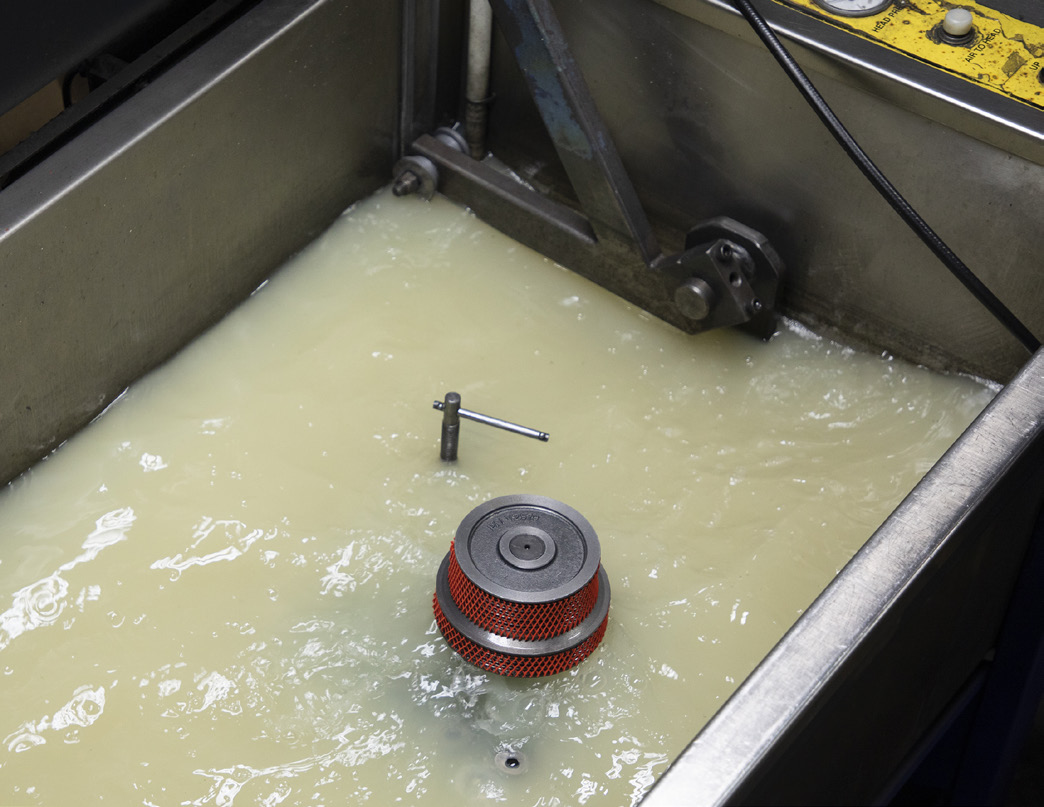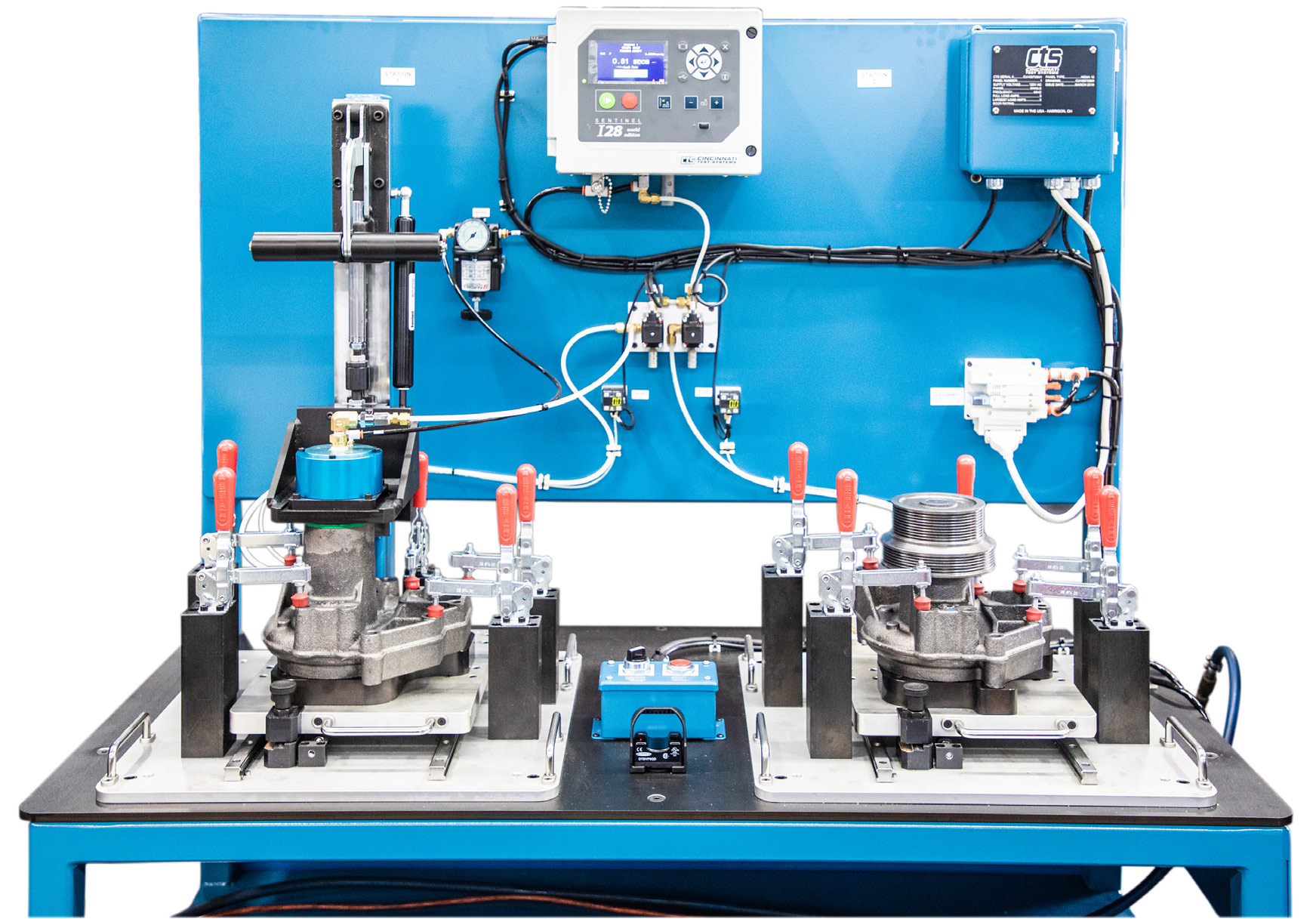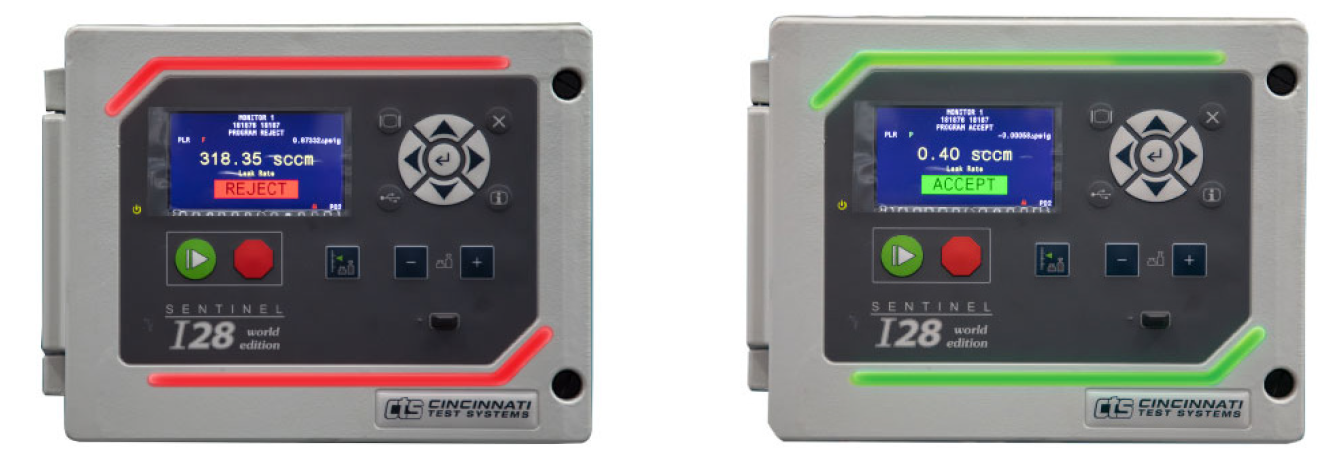At PAI Industries we strive to provide 100% customer satisfaction with every product and service that we provide. Quality and performance are the most important aspects of our designs. In order to achieve these goals, we employ stringent tests throughout our manufacturing process to ensure that our products are of the absolute highest quality.
Water Pump Function
Since overheating is one of the most common and destructive causes of engine failure, the job of the water pump is essential. The function of the water pump is to force coolant through the engine, hoses and radiator to reduce heat build-up. Combustion temperatures in the engine block can potentially reach temperatures high enough to damage the structural integrity of metal. Consequently, leaks in the water pump could be catastrophic. Due to the critical role of the water pump, PAI made the decision to upgrade and automate its water pump testing system.

Old Testing System
The former water pump testing system that PAI used was water-based. The operation consisted of submerging the completed assembly pump into an 80-gallon tank of water. An air hose was attached to the pump being tested. The completed assembly pump was placed on a support carriage, secured by bolting and then immersed into the tank. Air pressure was forced through the hose into the pump. If the assembly pump contained cracks or fissures causing leaks, air bubbles would escape and appear on the surface. If no bubbles appeared, the test was considered successful.

The original process made it necessary for a technician to observe the tank for three minutes looking for signs of bubbles. The completed assembly pump would then be taken off the support and put through a drying process to remove the water and contaminants (debris, dust and oil) that were present in the water. The entire process from loading the tank to the drying of the housing would take more than 5 minutes

Although the former process was serviceable, areas for improvement were identified. There were several disadvantages to the process. It was possible for water to splash out of the tank and into a worker’s eyes or create a hazard by spilling onto the floor. Secondly, it was necessary to change the water frequently resulting in down-time. Additionally, an unwarranted amount of physical strain could be caused due to the exertion of picking up the housing, bending into the tank and securing the housing in place. PAI technicians and engineers embarked on an endeavor to revamp and improve the operation.

The First Test
The process begins with testing the raw casting is before the housing is machined. The casting is leak-tested for imperfections called porosity. The unassembled housing is loaded onto precisely calibrated guides. It is then locked into place with a set of stabilizing clamps. The push of a button forces air into the chamber of the unit until it reaches the predetermined air-pressure (psi).
A highly sensitive electronic sensor differential gauge is set to detect a calculated minimum amount of leakage that occurs in a 55 second time-frame. The system can detect a leak smaller than the point of a pin. The sensor differential gauge ensures consistent readings. The element of human error is removed from the process.
If a leak is detected, the display panel display will signal red, indicating a failure. The machine runs diagnostic tests to detect the cause of the failure. Corrective action will be taken to address issues in the manufacturing process. If no leak is detected, a green light will signal a successful test.

Second Test
A second test is run after the assembly of the ancillary equipment (shaft, impeller, pulley, seals) to the housing. The second test is set to last 45 seconds. Upon successful completion of the second test, the water pump assembly is ready for use by our valued customers.
Tangible Benefits
As a result of PAI’s relentless pursuit of perfection, we have been able to provide maximum benefits.
For our team members:
- Cleaner working environment.
- Ergonomic workplace.
- Ease of diagnosing issues in manufacturing.
- Reduction of non-value-added processes.
For our customers:
- Product quality improvement.
- Guarantee of product availability.
- On-time delivery.
- World-class quality product performance.
Gaining the ability to easily detect cracks, porosity and machining errors greatly benefits all involved. Incorporating new technology is yet another example of PAI’s leading edge engineering and commitment to integrating state-of-the-art manufacturing technology.

